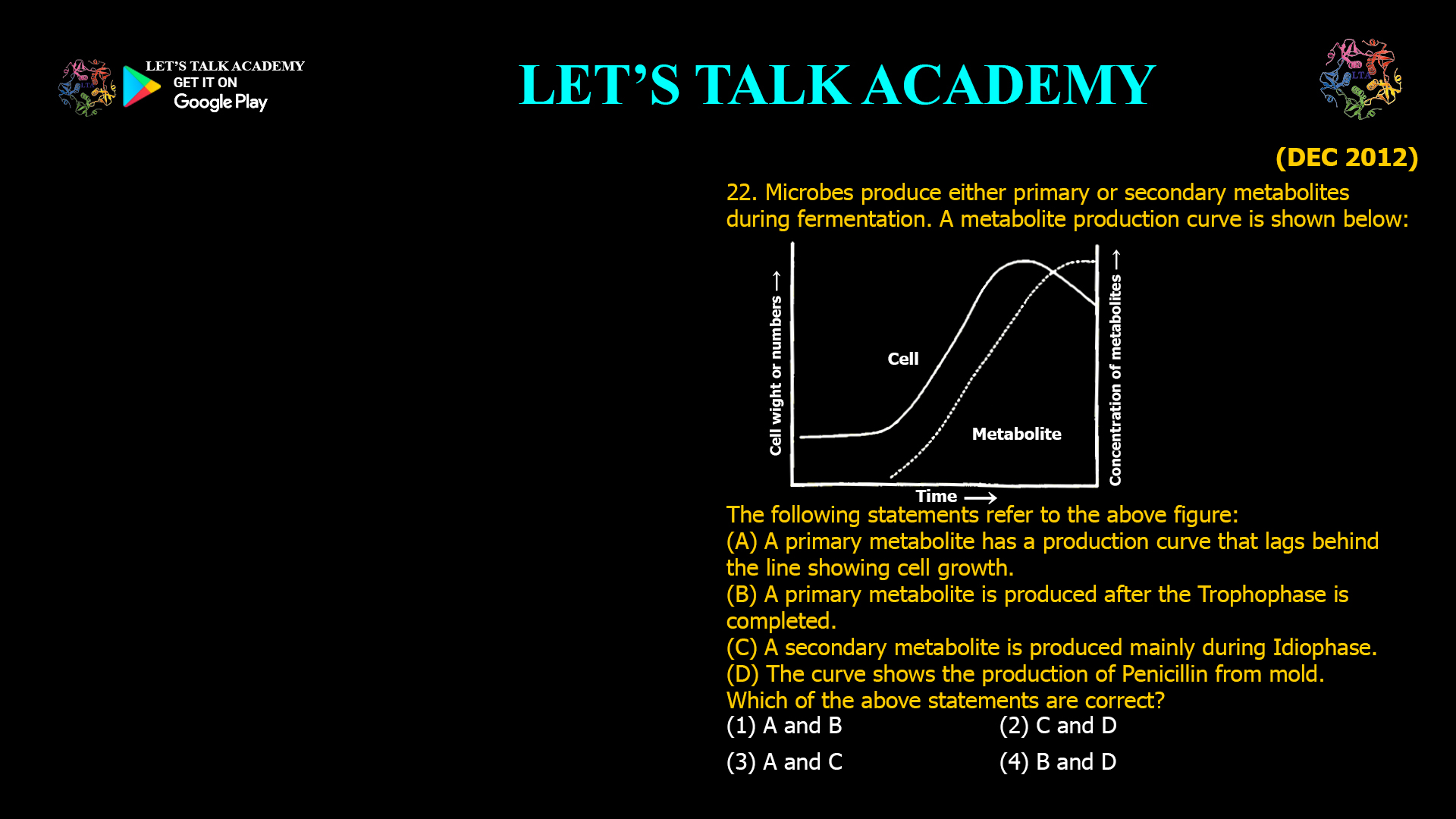- Microbes produce either primary or secondary metabolites during fermentation. A metabolite production curve is shown below:
The following statements refer to the above figure:
(A) A primary metabolite has a production curve that lags behind the line showing cell growth.
(B) A primary metabolite is produced after the Trophophase is completed.
(C) A secondary metabolite is produced mainly during Idiophase.
(D) The curve shows the production of Penicillin from mold.
Which of the above statements are correct?
(1) A and B (2) C and D
(3) A and C (4) B and DInterpreting the given curve
In the graph, the “cell” curve shows biomass increasing rapidly during the early period (trophophase), then slowing and reaching a maximum, after which it slightly declines, representing entry into stationary or decline phase. The “metabolite” curve starts after a lag, increases mainly once growth has slowed, and reaches its maximum during stationary phase, which is typical of secondary metabolite formation. Such a pattern matches classic penicillin production, where the antibiotic is synthesized after active growth, in idiophase.
Statement‑wise explanation
(A) “A primary metabolite has a production curve that lags behind the line showing cell growth.”
Primary metabolites (amino acids, ethanol, organic acids) are growth‑associated; their formation parallels biomass increase and does not show a pronounced lag behind growth. Because the graph shows the metabolite curve clearly delayed relative to cell growth, statement A is false for primary metabolites.(B) “A primary metabolite is produced after the trophophase is completed.”
Trophophase is the growth phase during which primary metabolism occurs; primary metabolites are produced mainly during trophophase, not after it ends. Production after trophophase corresponds instead to idiophase and secondary metabolites, so statement B is false.(C) “A secondary metabolite is produced mainly during idiophase.”
Idiophase follows trophophase and corresponds to the phase in which secondary metabolites, not essential for growth, are synthesized, usually in late log and stationary phases. The metabolite curve in the figure rises mainly after active growth slows, matching idiophase, so statement C is correct.(D) “The curve shows the production of Penicillin from mold.”
Penicillin is a classic secondary metabolite produced by Penicillium species, with synthesis starting after rapid growth and peaking in stationary phase, showing a delayed, non‑growth‑associated production curve like the one drawn. Hence the graph is consistent with penicillin production, and statement D is correct.Correct option and exam hint
Because statement C (secondary metabolite produced mainly during idiophase) and statement D (curve represents penicillin production) match the given pattern, while A and B misdescribe primary metabolite behavior, the correct answer is option (2): C and D. Remember for exams that “primary metabolite = trophophase, growth‑associated” and “secondary metabolite = idiophase, non‑growth‑associated, penicillin type,” which directly guides interpretation of such curves.



